Amidst coronavirus, I’m sticking to what I – and a lot of other people – love most: cooking and baking. One challenge I’ve presented to myself is to make a dish (or dishes) of international cuisines every week, learn some words from the language, and e-visit some of the country’s landmarks. Some of these dishes will be more complex than others, based on what ingredients I have available in the house.
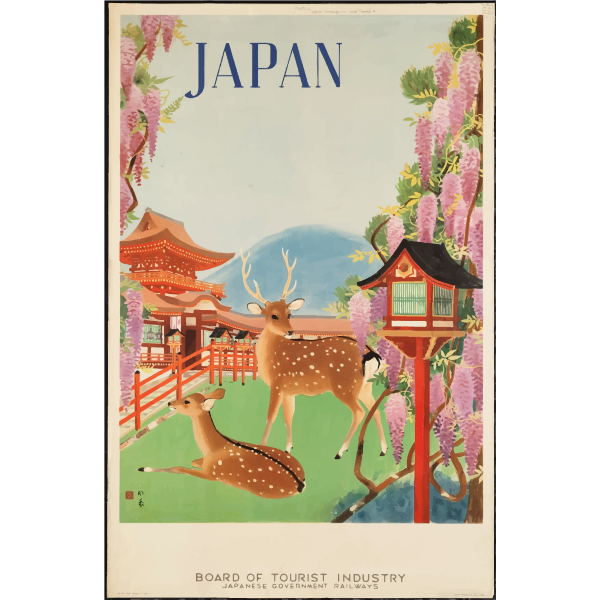
こんにちは!
Kon’nichiwa! This week we’re heading to Japan. This country is definitely on my bucket list to visit. Between the intersection of tradition, futurism, and delicate, layered flavors of its cuisine, it’s been fun to learn more about Japan outside of sashimi 🙂
Japanese cuisine staples include rice, noodles (soba and udon), and miso. Traditionally, Japanese cuisine did not use meat due to Buddhism, but post- 1880’s with Japan’s modernization, meat dishes made their way, with sushi and beef dishes. For seasoning, there’s dashi (a type of fish stock), soy sauce, mirin and rice vinegar.
DISH #1: MUSHROOM UDON NOODLE SOUP WITH TOFU (V, GF-friendly)
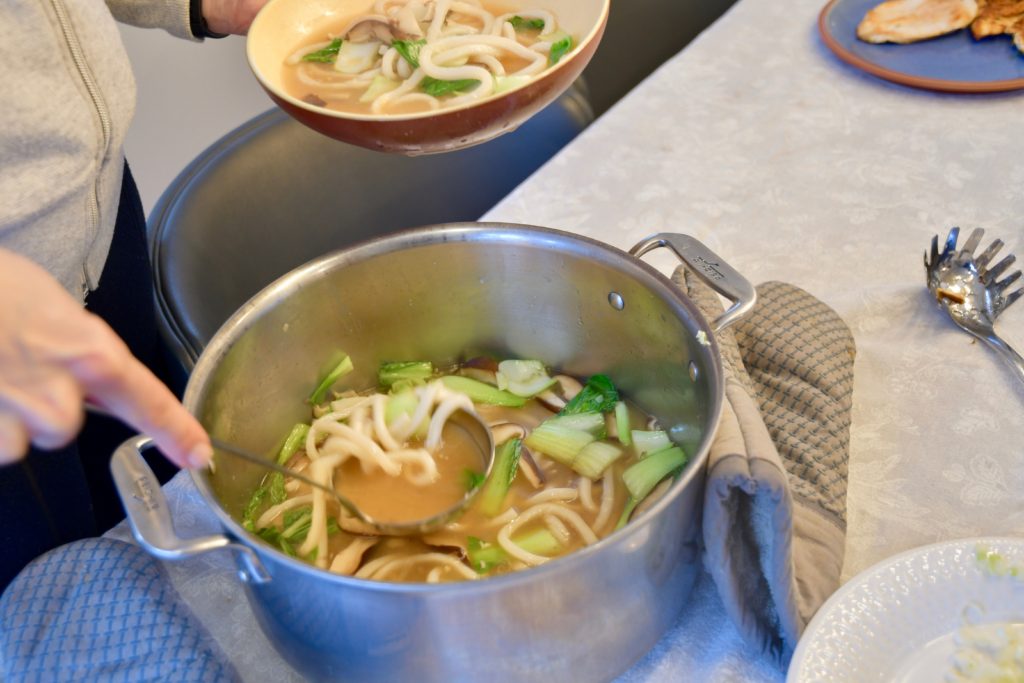
If there’s one thing I’ve picked up in Boston – cuisine wise – is that students are obsessed with noodles. And rightfully so. There are few things as warming, filling, slurpy, and umami as a bowl of noodle soup. My favorite noodle place ever was a place my friend took me to for her sister’s birthday, called Little Big Diner in Newton, Mass.
You may wonder, What is umami? Umami the word roughly translates into “deliciousness” in Japanese. But it’s not just deliciousness – it’s a category of taste in food like sweet, sour, etc. Foods that have a strong umami flavor are tomatoes, mushrooms, cheeses, fish (sauces and preserved), and soy sauce.
Making a noodle soup has many benefits, particularly during these times:
- It uses ingredients with longer shelf lives: bok choy, scallions, nori, noodles, and all the sauces.
- It’s a one-bowl and done meal, meaning you get your carbs, veggies, protein, and fat in one dish.
- You can save the broth for the next day and reheat it. If you run out of noodles, just add in white rice.
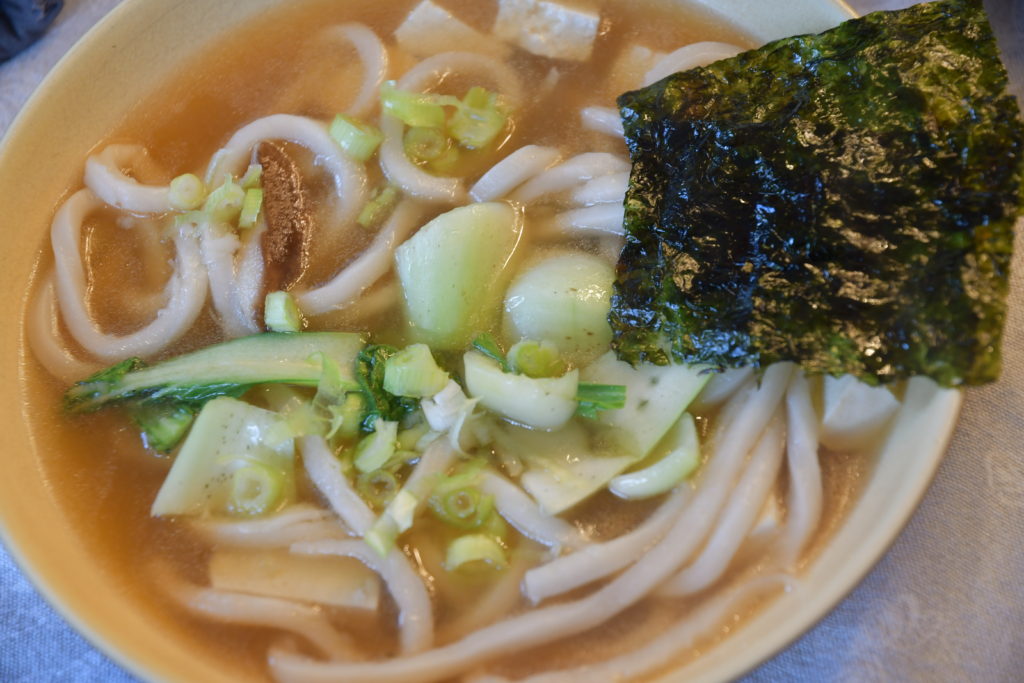
Recipe: New York Times’ Mushroom Udon Soup
- Instead of butter, I used a neutral oil (sunflower seed oil)
- Instead of soft/medium tofu, I found firm tofu to hold up best
DISH #2: YAKI UDON (V, GF friendly)
Yaki Udon is a Japanese stir-fry with vegetables and meat. The story behind this recipe dates back to just after World War II, when food was scarce. The owner of a noodle restaurant used udon noodles in the popular yakisoba (another stir-fry dish) preparations because the proper noodles (soba noodles) were not available.
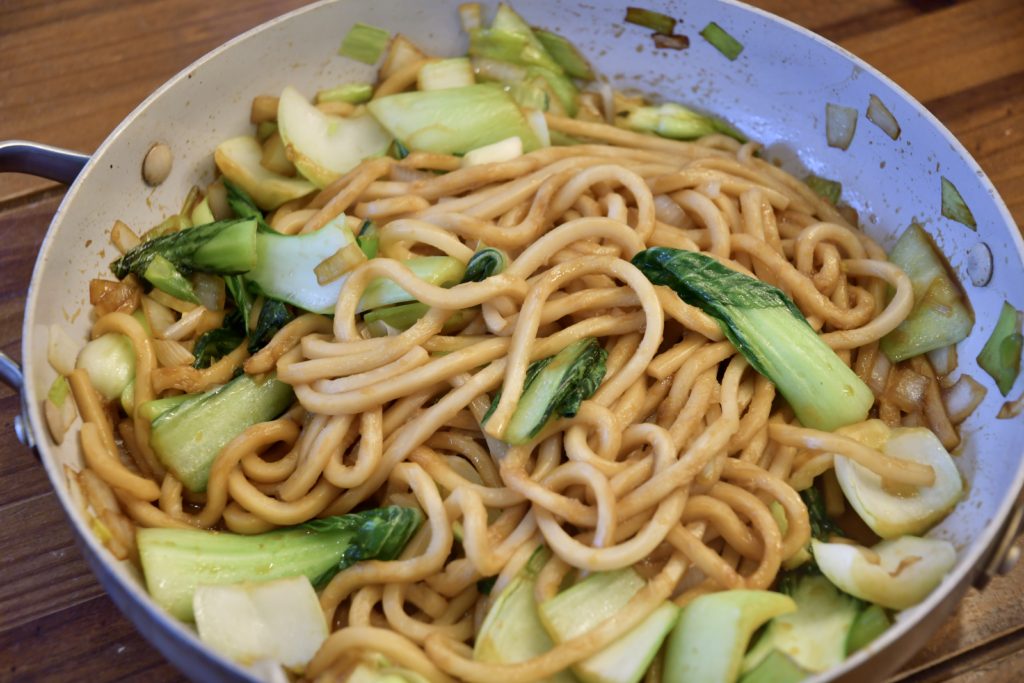
Recipe: Drive Me Hungry’s Yaki Udon
- Note: For a vegan version, I omitted the meat and replaced oyster sauce with more soy sauce.
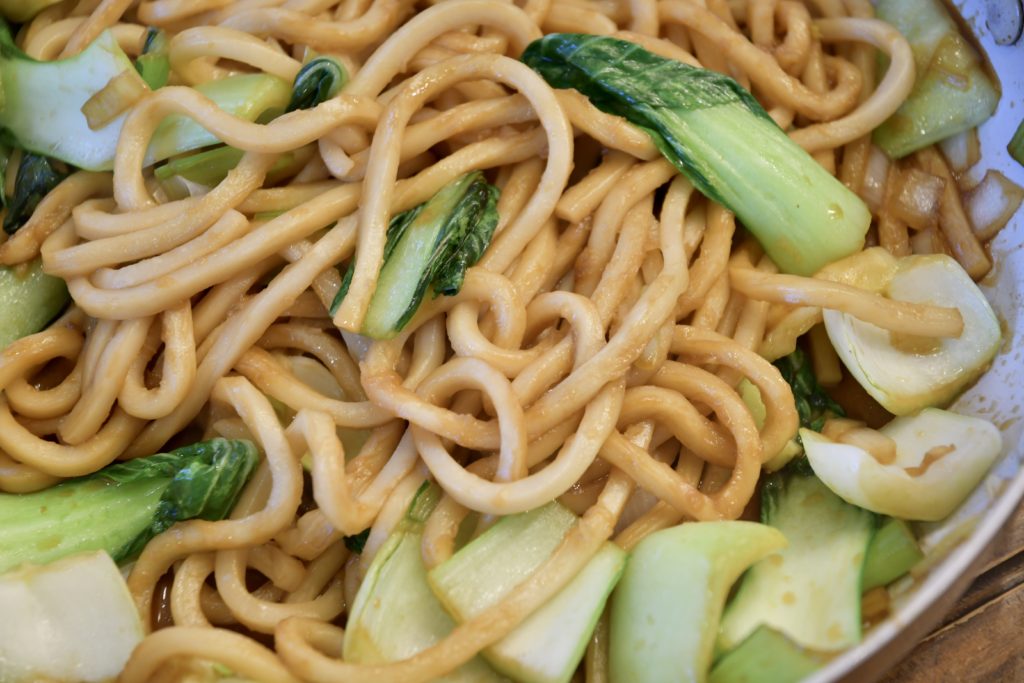
DISH #3: MISO BLACK COD (GF, DF)
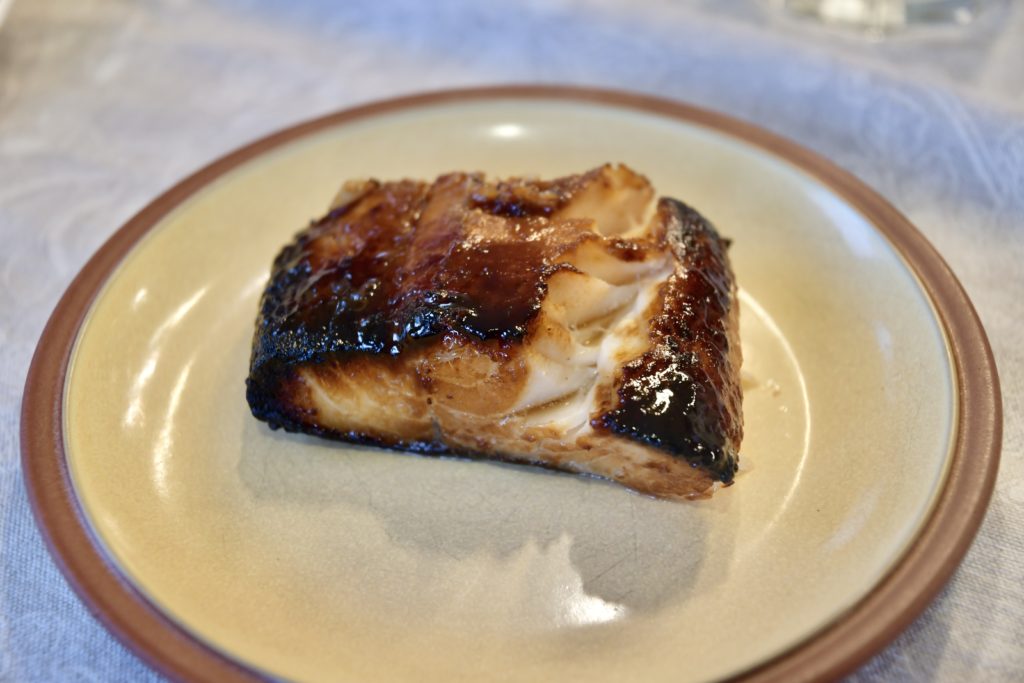
Popularized by the high-end Japanese restaurant, this sweet-savory dish is black cod at its best. Smooth, crispy and melt-in-your mouth. Oishī (delicious), as the Japanese would say.
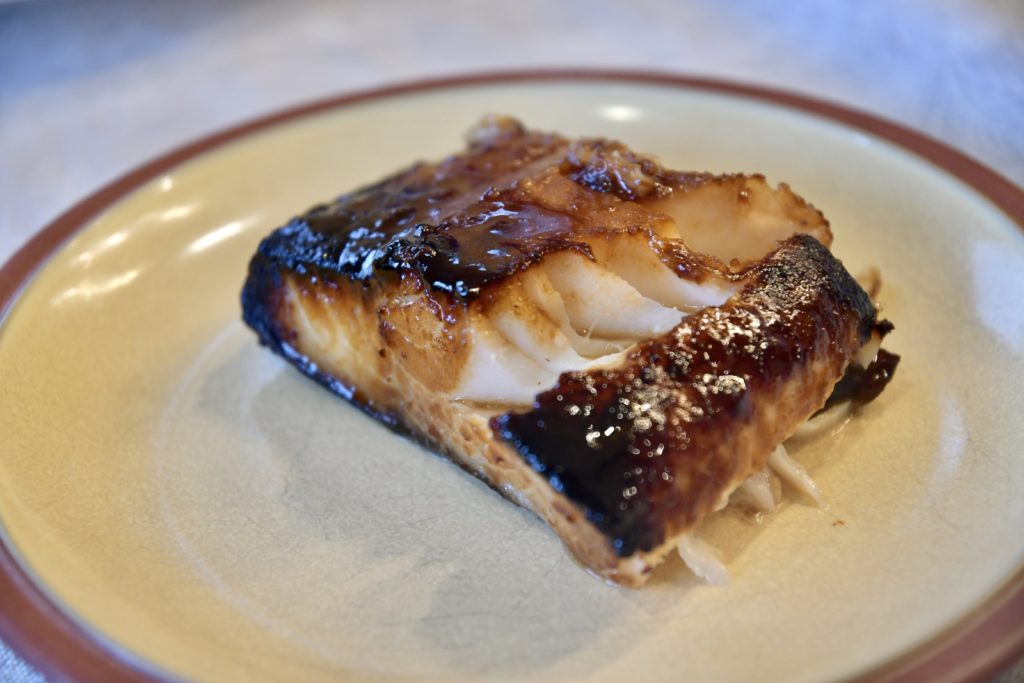
Recipe: Food & Wine’s black cod with miso
- Note: I cut the 1/3 C of sugar into 1/4 C, replaced white miso with red miso, and rice vinegar for sake.
DISH #4: CEREMONIAL MATCHA TEA (GF,V)
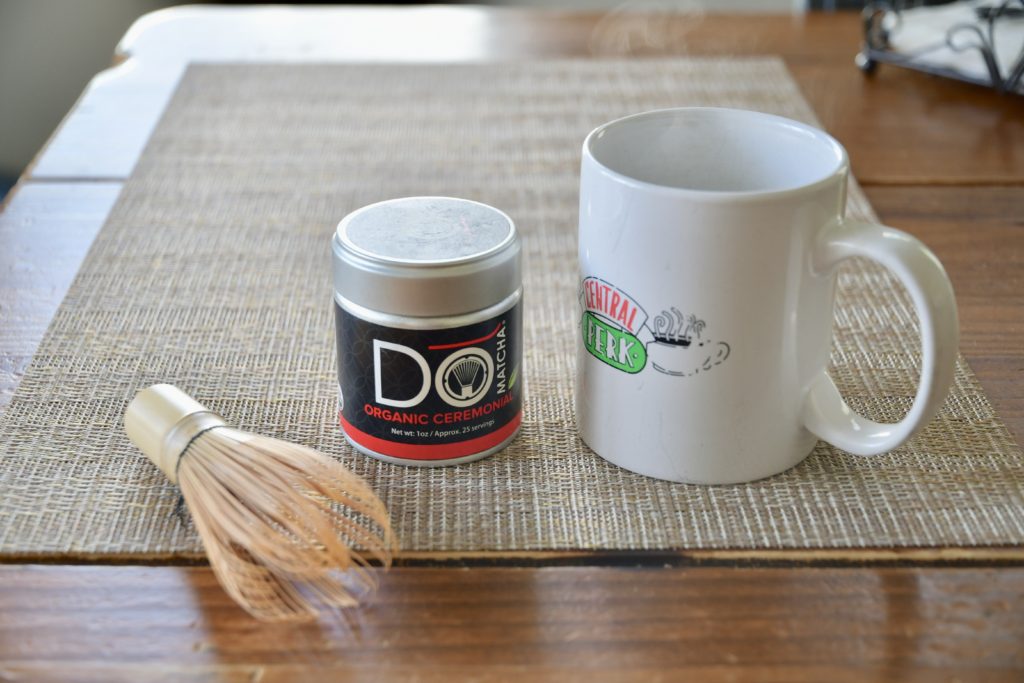
The word matcha comes from Japanese, in which “ma” means ground, and “cha” means tea. The tea leaves used for matcha are grown in two Japanese regions: Uni in Kyoto and Nishio in the Aichi.
Matcha has many benefits, including the following:
- It has powerful antioxidants, such as EGCg, which is thought to reduce inflammation, aid in weight loss, and help prevent heart and brain disease, according to healthline.com.
- Matcha has the amino acid L-thteanine, which promotes a state of relaxation and helps memory. Matcha contains up two five times more of this amino acid than common black and green teas, according to matchasource.com.
- Matcha is rich in chlorophyll (green pigment), which helps eliminate heavy metals from the body.
To make matcha:
- Sift 1-2 tsp matcha into a cup.
- Add ~2 oz. hot water.
- With a bamboo whisk, move it in a W fashion until the tea is frothy.
- Add more hot water.
- Enjoy!
USEFUL WORDS
Greetings
- Kon’nichiwa –> Hello
- Yōkoso –> Welcome
- Sayōnara –> Goodbye
- Genki? (Informal) or O genki desuka? (Formal) –> How are you?
- RESPONSE: Zekkōchō desu –> I’m great
Conversation
- Anata no namae o oshiete? –> What’s your name?
- Watashinonamaeha ____ –> My name is ___
- Nani o shitaidesu ka? –> What do you like to do?
- Arigatou or Arigatou gozaimasu (more polite) –> Thank you
LANDMARKS
Mount Fuji

Mt. Fuji is an active volcano, and is considered to be one of Japan’s 3 sacred mountains.
Kinkaku-ji

Kinkaku-ji is a Zen Buddhist temple in Kyoto.
Ashikaga Flower Park
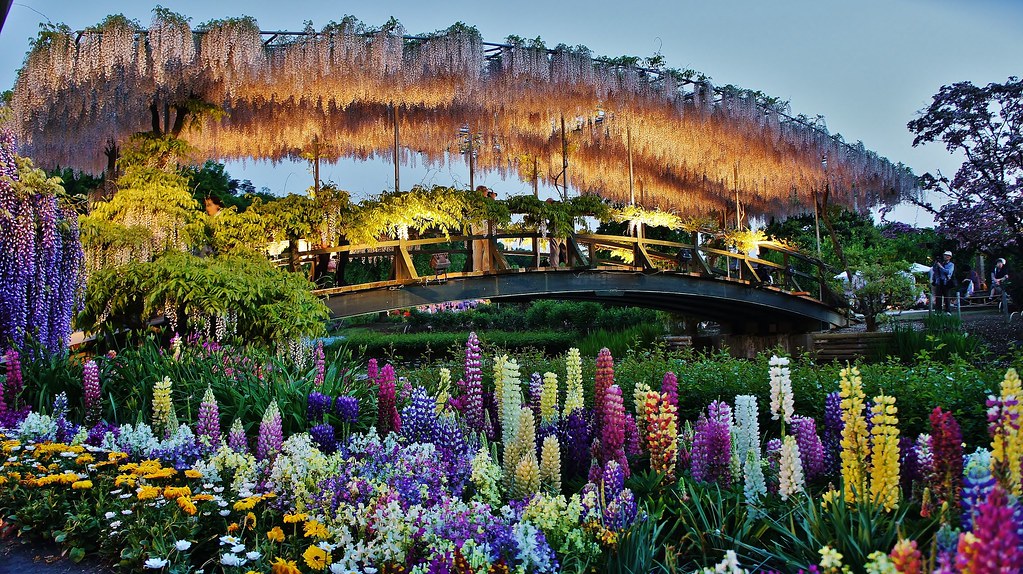
This flower park changes into 8 seasonal thematic displays.
Tokyo Tower

This tower is a communications and observation tower in Tokyo, inspired by the Eiffel Tower.
I hope you’ve enjoyed this little tour of Japan!